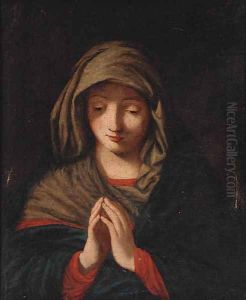Francesco Maratta Paintings
Francesco Maratta, also known as Carlo Maratta or Maratti, was a prominent Italian Baroque painter, active mainly in Rome. Born in Camerano, Italy, in 1625, Maratta showed an early inclination towards the arts. His talent was nurtured under the guidance of Andrea Sacchi, a leading painter of the time, who played a critical role in shaping Maratta's artistic direction. Maratta's style is characterized by its classical approach, drawing heavily on the traditions of Raphael, and is often cited as a counterbalance to the exuberance of the Baroque style represented by artists like Bernini and Pietro da Cortona.
Maratta became one of the most influential artists of his time, his works encompassing religious themes, portraits, and mythological subjects. He was especially renowned for his Madonnas, which were celebrated for their serene beauty and grace. His mastery in painting was complemented by his skill in drawing, which earned him commissions from high-ranking patrons, including popes and royalty. Maratta was also involved in the restoration of frescoes in the Vatican, most notably in the Raphael Rooms, where his work contributed to the preservation of Renaissance masterpieces.
Beyond his artistic achievements, Maratta played a significant role in the Roman art world as a teacher and mentor. He ran a successful workshop, attracting students from across Europe, thereby spreading his influence well beyond Italy. His advocacy for the classical tradition against the emerging Rococo style helped preserve the academic foundation for the Neoclassical movement that emerged after his death.
Maratta's legacy is not only found in his paintings but also in his contributions to art theory and conservation. He engaged in the discourse on art, advocating for the study of anatomy and drawing from life, principles that would inform art education long after his time. His death in 1713 marked the end of an era, but his impact on the course of European art continued, with his works and teachings influencing generations of artists, including those who led the charge towards Neoclassicism.
